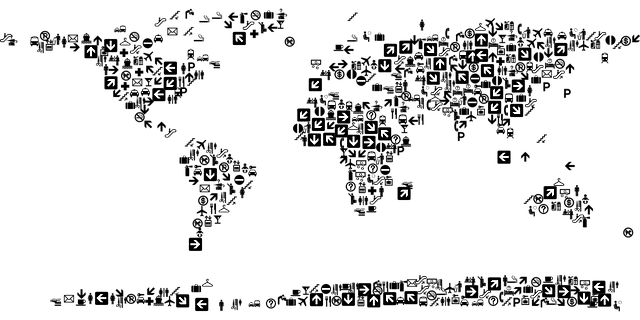Catholics Then, Muslims Now
By DOUG SAUNDERS
THE short, crude anti-Muslim video that sparked a wave of violent protests across the Middle East did not emerge from an obscure pocket of extremism; it is the latest in a string of anti-Muslim outbursts in the United States. In August, a mosque was burned down in Missouri and an acid bomb was thrown at an Islamic school in Illinois. The video’s backers are part of a movement that has used the insecurity of the post-9/11 years to sow unfounded fears of a Muslim plot to take over the West.
Their message has spread from the obscurity of the Internet and the far right to the best seller lists, the mainstream media and Congress. For the first time in decades, it has become acceptable in some circles to declare that a specific religious minority can’t be trusted.
During the Republican primaries, Muslims were accused of harboring plans for “stealth Shariah.” A group of five Republican House members, led by Michele Bachmann, groundlessly accused two prominent Muslim federal officials of loyalty to Egypt’s Muslim Brotherhood. Another Republican representative, Joe Walsh of Illinois, used a campaign rally to suggest that Muslims in the Chicago suburbs were plotting to commit terrorist attacks. In New York City, the police spied on thousands of Muslims for six years without producing any evidence that could lead to an investigation.
The view that members of a religious minority are not to be trusted — that they are predisposed to extremism, disloyalty and violence; resist assimilation; reproduce at alarming rates, and are theologically compelled to impose their backward religious laws on their adopted home — is not new. From the 19th century on, distrust, violence and, eventually, immigration restrictions were aimed at waves of Roman Catholic immigrants.
As late as 1950, 240,000 Americans bought copies of “American Freedom and Catholic Power,” a New York Times best seller. Its author, Paul Blanshard, a former diplomat and editor at The Nation, made the case that Catholicism was an ideology of conquest, and that its traditions constituted a form of “medieval authoritarianism that has no rightful place in the democratic American environment.”
Catholics’ high birthrates and educational self-segregation led Mr. Blanshard and others — including scholars, legislators and journalists — to warn of a “Catholic plan for America.”
Many Americans shunned such views, but some liberals did not. Mr. Blanshard’s book was endorsed by the likes of John Dewey and Bertrand Russell, and respected scholars like Seymour Martin Lipset, Reinhold Niebuhr and Sidney Hook debated Catholics’ supposed propensity toward authoritarianism.
Then, as now, there seemed to be evidence supporting the charge. Majority-Catholic countries like Spain, Italy, Portugal and Austria, had fallen into fascism or extremism. Crime and educational failure were rife among the children of Catholic immigrants. In the years after World War I, Catholic radicals carried out a deadly wave of terrorist attacks in the United States.
These days, the same dark accusations are being leveled at American Muslims, many of whom are recent immigrants. And many otherwise reasonable Americans have greeted Muslims with fear and suspicion — in part because they came at a bad time. Their emigration to the United States, like that of many Catholics before them, has coincided with turmoil in their native countries and violence from a few extremists in their midst.
In the years after 9/11, anti-Muslim rhetoric simmered on blogs, YouTube videos and a stream of inflammatory best sellers. But not until Barack Obama’s presidency was it allowed to erupt into prominent corners of mainstream politics. Mitt Romney, to his credit, has shunned notions of American Muslim disloyalty, but Republican political and media figures have tolerated or even advanced these hateful myths.
In reality, Muslim immigrants are a success story. They have high levels of educational attainment. Their birthrate is converging quickly with that of the general population. They are likely to ultimately make up less than 2 percent of the population, around the same share as Episcopalians and Jews.
The violent few among them are no more a product of Muslim values than 1920s anarchists were of Catholic values. Extremism is vanishingly rare among American Muslims, and loyalty to secular state institutions is high. The idea of a stealth takeover by Islamic believers is a delusion. So is the more moderate idea of a permanently alien and unassimilable “civilization” in America’s midst.
American Muslims are falling victim to the same misunderstandings and fallacies that threatened earlier waves of non-Protestant immigrants. The last thing they need, as they work to become part of the mainstream, is a political movement devoted to portraying them as a menace. In an election year when both major parties have a Roman Catholic on the ticket, we should take care to make sure that history does not repeat itself.
Doug Saunders, the European bureau chief for The Globe and Mail, is the author of “The Myth of the Muslim Tide: Do Immigrants Threaten the West?”
A version of this op-ed appeared in print on September 18, 2012, on page A25 of the New York edition with the headline: Catholics Then, Muslims Now.
via Catholics Then, Muslims Now – NYTimes.com.


Leave a Reply